Who’s feeding the Park?
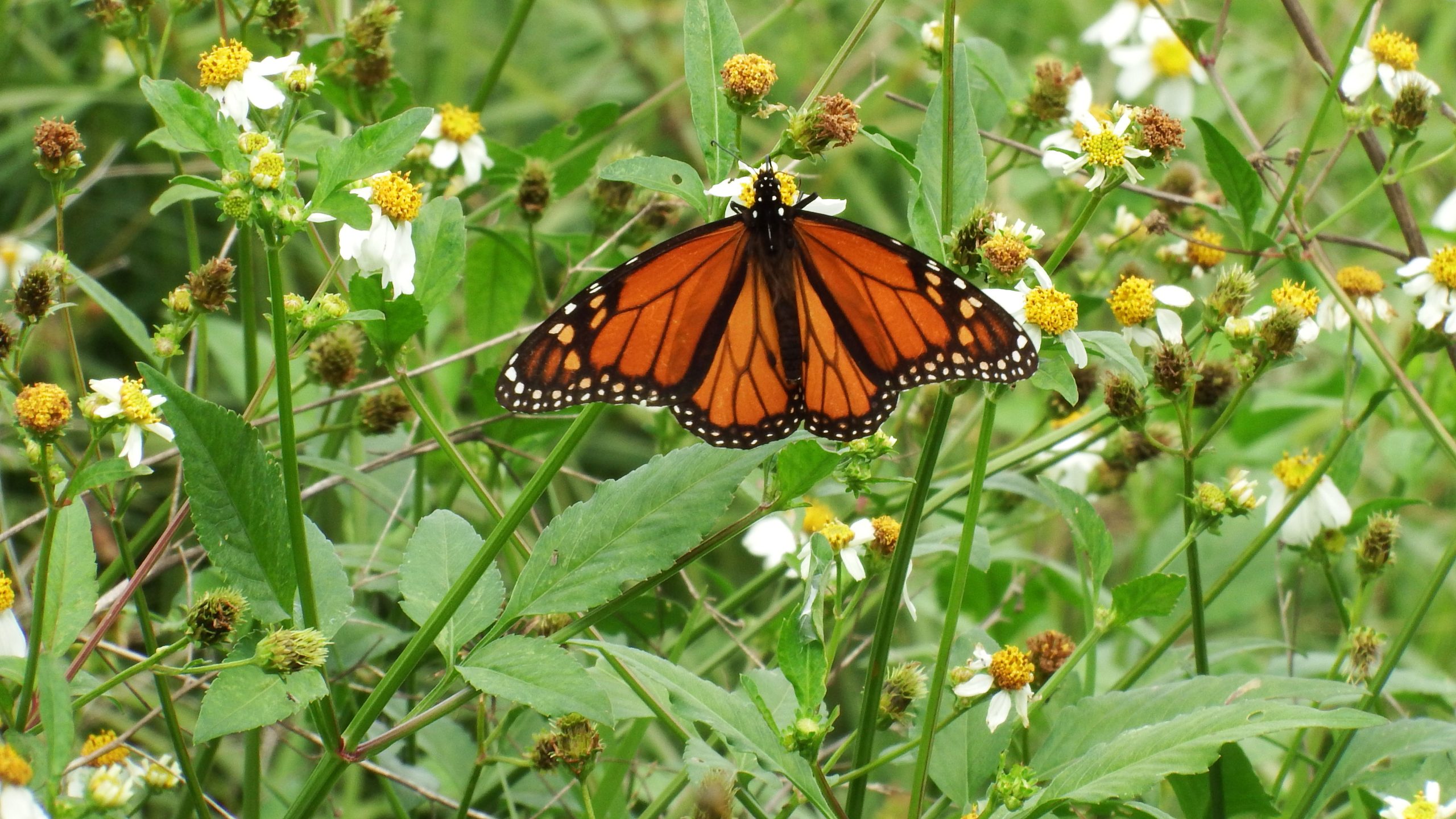
There are many lenses through which to view nature in general and our Park in particular. Recreation, tranquility, civic pride, aesthetic beauty. There’s a more prosaic lens as well. Nature, and our Park, can be seen as a collection of eaters and their food. Some organisms are always one or the other; some creatures can switch categories in a heartbeat. A bat emerges to eat mosquitoes and without warning becomes a snack for a Swainson’s hawk.
On Monday, I tried to circumnavigate the Park taking a casual inventory of eaters and eaten. There were some lovely surprises. I saw my first soft-shelled turtle in years. Of course, my not having seen one does not mean they were absent, just absent from my view.
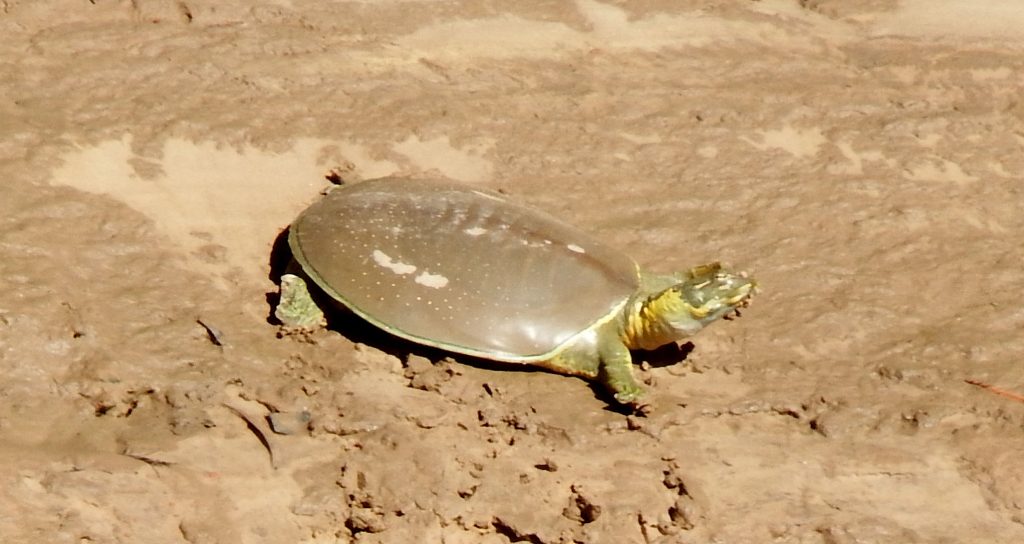
This spiny soft-shell turtle was catching some rays on the bayou’s north bank.
It is easy not to see spiny soft-shells. For one thing, even when they are sunning themselves out of the water, they hardly stand out against the banks of the bayou. And they don’t have to spend a lot of time on the surface. You can’t see it well in this photo taken from the other side of the bayou, but they have a long slender snout which they use as a snorkel, so they don’t have to completely surface to take a breath. And as long as the water is room temperature or above, they can remain submerged for up to five hours, absorbing oxygen through specialized mucous membranes. Soft-shells are one of the fastest swimming turtles, but they spend most of their time half-buried on the bottom of the bayou, snatching tasty morsels as they swim by.
Another lovely surprise was a loggerhead shrike. I have seen them in the Park within the last year, but have not been able to find one for a while. They are here because they eat insects and the insects are here because they eat nectar, pollen and other things insects find tasty (sometimes other insects!).
When it comes to feeding pollinators, our Park is home to a powerhouse that you see so often, you have probably stopped noticing it. It is Bidens alba, sometimes called shepherd’s needle. This is a weedy plant. It’s native to Mexico and Central America, and given the vicissitudes of climate these days, I’m claiming it for Texas!
I was especially looking for winter pollen sources because I have become more aware of how active some of our pollinators are in winter. Honeybees will come out on any day that’s not positively cold, and our carpenter bees, which were once absent until spring, seem to have become year-round eaters!
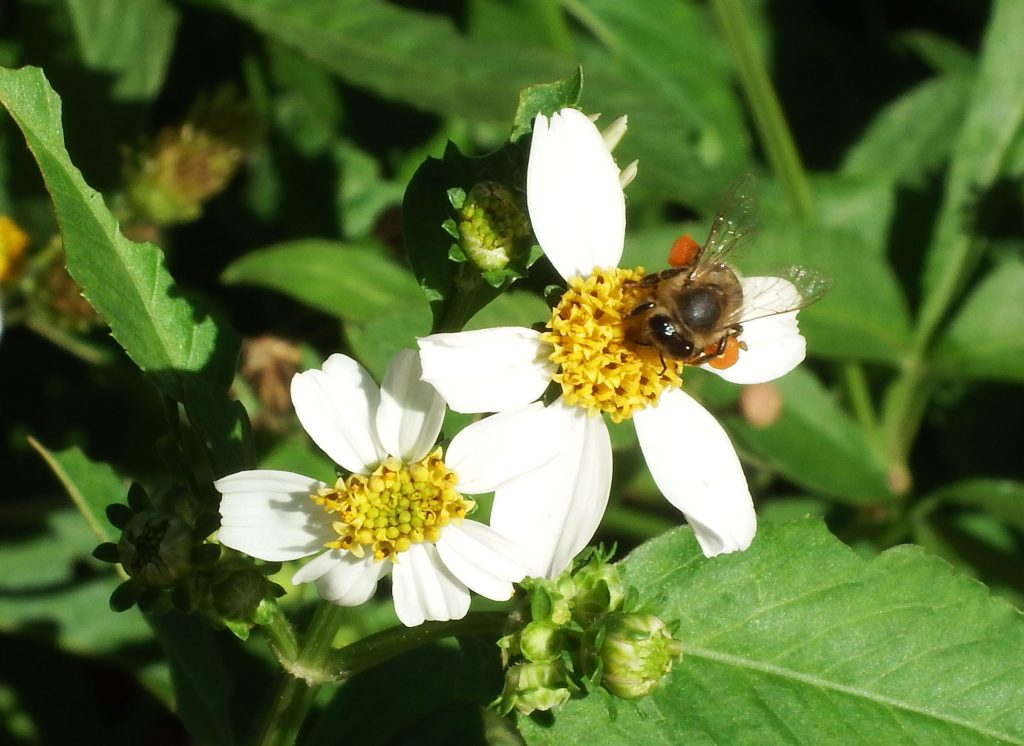
This honey bee has been so successful foraging on Bidens alba that both of her pollen baskets (the red protuberances on either hind leg) are stuffed full!
When the weather is warm enough for these critters to come out in search of food, it is essential that there is food to find, reliably. The only plant in the Park that is widely distributed and meeting that need is the Bidens alba.
It is absolutely everywhere, and on Monday, every patch had bees, flower flies and even a butterfly or two. The lovely purple fall asters are mostly balls of fluffy seeds, same with the goldenrod. But Bidens alba just keeps chugging, feeding every bee in the Park.
There are two other flowers I saw blooming profusely.
In almost every area of deep shade, white snakeroot has spread out. The bees didn’t seem very interested, but I suspect that is because this plant has such a preference for deep shade in our Park. On chilly days, sunshine is what gives our coldblooded bees the energy to fly. Perhaps they are wary of shady areas.
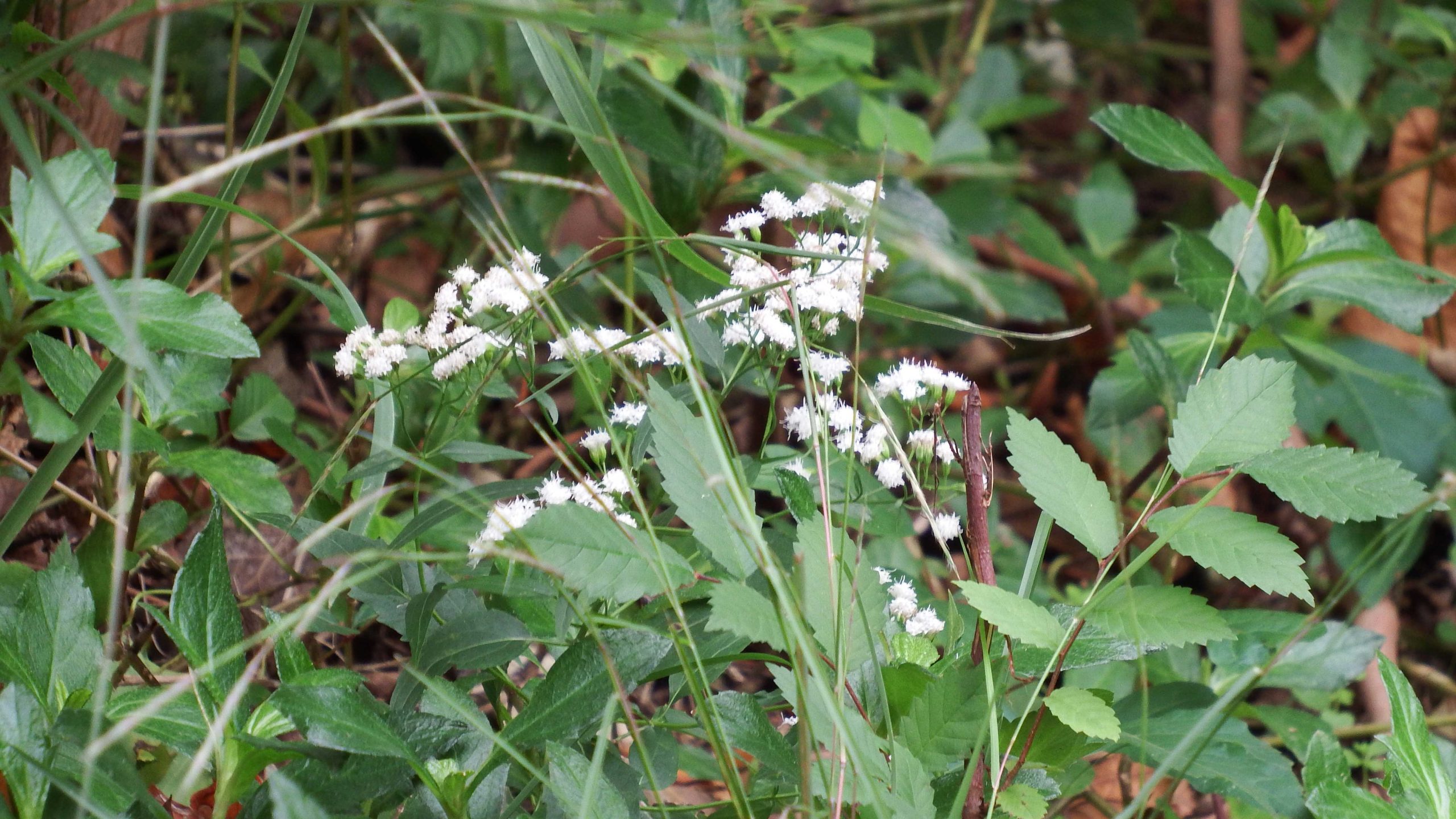
White snakeroot can be found all over the Park. Look in deeply shaded areas, and I shouldn’t have to mention this, but don’t taste! This one’s toxic.
The third flower I found in abundance wasn’t everywhere, but on the north side of the bayou between Shepherd and Jackson Hill, there is a large and lovely stand of Dicliptera brachiata (false mint). Even though they were in a partially shady area, the flowers were alive with bees. This is the largest stand of dicliptera I have seen in the Park and it was very nice to find something the bees enjoyed as much as I did.
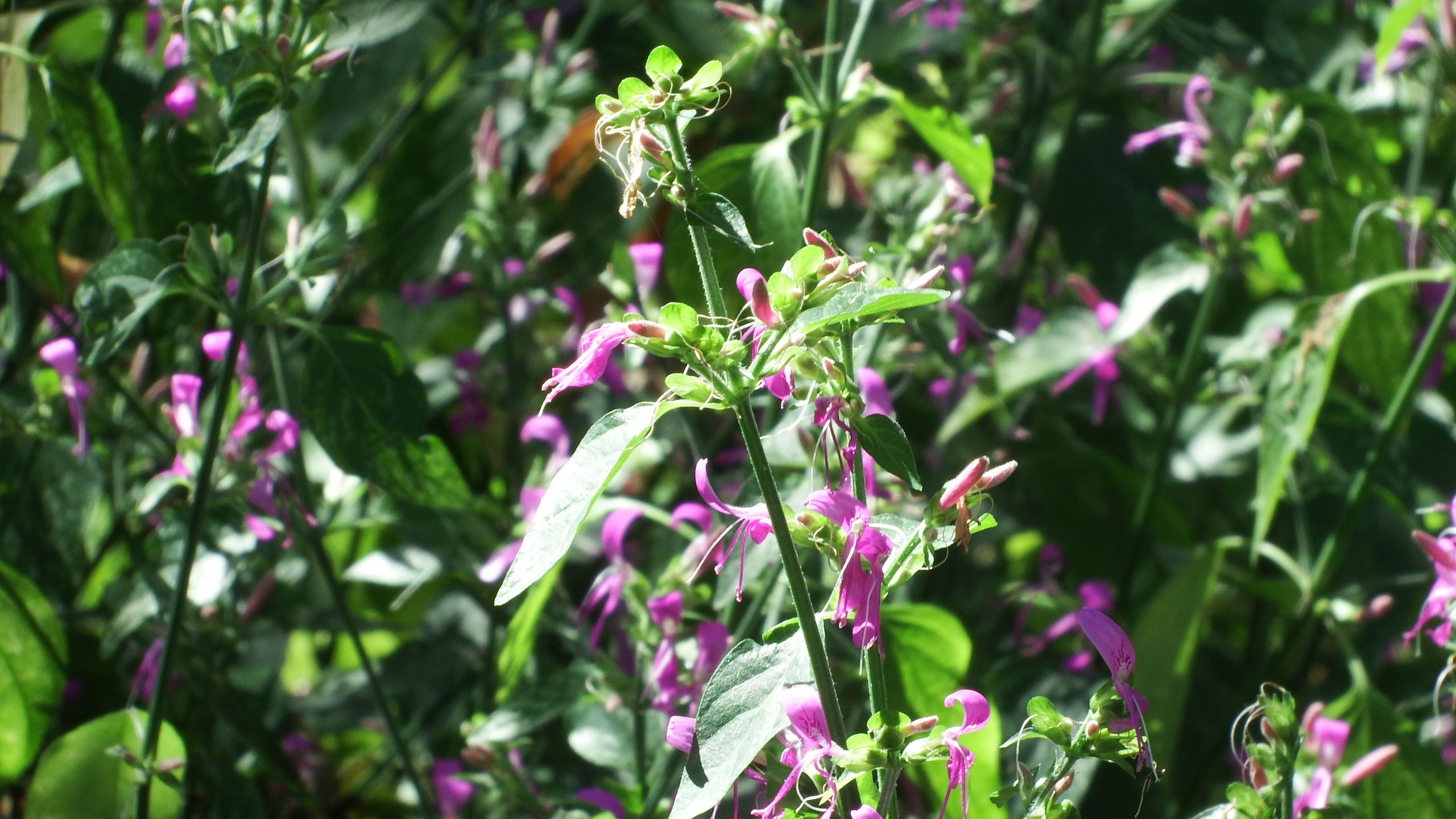
This is dicliptera (false mint). The delicate purple flowers were alive with bees last Monday.
Near where I found the dicliptera was my other surprise – a sedge wren. At least, I am fairly certain it was a sedge wren. I was treated to a lengthy soliloquy of harsh scolding calls a lot like a sedge wren and a very brief view of what seemed very much like a sedge wren. Since it’s not a bird I see often and not one that has been reported frequently around the Park, I don’t want to stomp my foot. But if you want to look for it, I saw it on the cement path, north side of the bayou, just east of where the path below Shepherd splits off.

